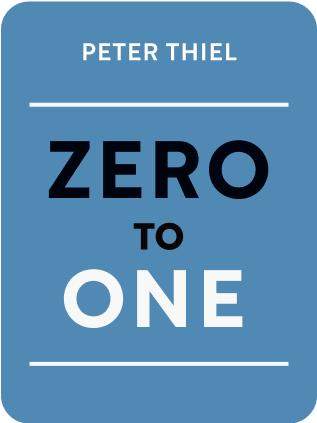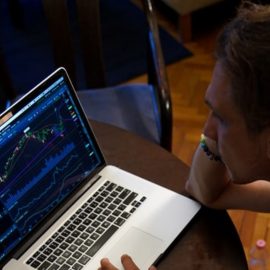

This article is an excerpt from the Shortform summary of "Zero To One" by Peter Thiel. Shortform has the world's best summaries of books you should be reading.
Like this article? Sign up for a free trial here .
How does venture capital work, and what does the Pareto law have to do with it?
When you ask, “How does venture capital work?”, the answer is complicated. But one element of venture capitalism is using the Pareto law, or power law.
How Does Venture Capital Work?
How does venture capital work? Venture capitalists search out promising tech startups to invest in for a share of the profits. While many of them don’t fully understand it, the power law greatly influences their results.
If companies in a venture fund portfolio gain value and go public or are sold to larger companies, the venture fund makes money. However, a venture fund typically loses money at first because most of the companies in its portfolio fail soon after starting. The investors hope the fund’s value will shoot up in a few years when the most successful startups experience exponential growth and scale up.
They try to identify companies that will excel, while hedging their bets—which is a mistake. They expect portfolio returns to be normally distributed, with good companies returning two to four times value, average ones remaining flat and some failing. So they aim for a diverse portfolio, which usually fails.
This approach fails because, in reality, venture returns follow a power law: a very small number of companies far surpass all others combined. For your portfolio to succeed, you need to focus on finding those few companies that will be standout performers rather than focusing on diversification. For example, Facebook, the most successful company in Thiel’s Founders Fund, returned more than everything else in the portfolio combined. Palantir, the second-most successful investment in the fund, was set in 2005 to return more than all of the others combined excluding Facebook. You need to understand the secrets of funding to know how venture capital works.
The secret in venture funding is that the top investment equals or exceeds the rest of the fund combined. This means you should invest only in startups with the potential to return the value of the whole fund—which of course eliminates most potential investments.
You still need a portfolio because there are no guarantees. But every company in your portfolio should have extraordinary potential. Find a very small number of companies likely to go from 0 to 1—and back them to the hilt.
When you stop looking for substance and focus on whether a company fits your diversification strategy, your process is akin to buying lottery tickets and you’re setting yourself up to lose.
Missing the Pattern
Venture capitalists often don’t see the power law pattern because they fixate on the present, while the pattern develops over time. Knowing how venture capital works can help you successfully find patterns.
For example, if you invest in ten startups (too many) with monopoly potential, their early returns will look similar. Their values will start to vary from each other over a few years but overall fund growth will still look linear. However, after about 10 years, one investment will shoot up, far exceeding everything else. Power law distributions were there all along, unnoticed.
Investors aren’t alone in not seeing the power law when it comes to startups—everyone else does too. This is part of how venture capital works.
For example, when most people think of venture capital, they imagine small, off-beat companies like those on ABC TV’s Shark Tank. But they miss seeing the huge overall impact venture capital has on the economy. While less than 1% of the new businesses starting annually get venture funding and venture funding accounts for less than 0.2% of GDP, this funding has a disproportionate impact. Venture fund companies create 11% of private-sector jobs; their combined annual revenue is equivalent to 21% of GDP.
The Power Law in Life
Everyone should be aware of the power law—a minority of effort leads to a majority of results—because we’re all investors.
- An entrepreneur invests by spending time on a startup and therefore should think about the company’s chances of taking off.
- The average person investing in a career should consider how valuable that type of work will be decades into the future.
- Students can learn to think in power law terms and focus intensely on something they’re good at rather than trying to do well on a predefined menu of course and career options. Just make sure the work you’ve chosen will be valuable in the future.
You don’t need to start an extraordinary company to benefit from the law of power and to understand the answer to the question, “How does venture capital work?” You may find huge success in joining a great company on its upward trajectory. If you do start a company, operate it according to the power law. A narrow focus on the right thing will produce the greatest results:
- One market will bring the greatest success.
- One distribution strategy will outperform all others.
- Some moments will count more than others.
- What’s most important probably won’t be obvious.
How Does Venture Capital Work With the Value of Secrets?
How does venture capital work to create value? Creating a great business that no one else can compete with starts with discovering and building on a secret—it can be an untapped opportunity or a different way of looking at a problem. This chapter suggests ways to think about secrets and how to find them.
There’s a lot we don’t understand or haven’t thought of. Some secrets may be unfathomable, for instance string theory, the so-called Theory of Everything, which describes the universe in terms of strings. However, other secrets are challenging but still discoverable.
For example, the business version of the contrarian question—”What valuable company hasn’t been started yet?”—is challenging but answerable. As long as there are secrets to discover, there are revolutionary companies to start.
The Problem With Conventional Wisdom
Believing only in what’s accepted as true creates problems or makes it harder to recognize and solve them.
For example, in economics, because of a firm belief in market efficiency, people missed seeing the tech and housing bubbles before they burst in 1999 and 2005 (bubbles result from market inefficiencies). While Fed Chairman Alan Greenspan noticed signs of trouble in the housing market, he dismissed them, saying that “a bubble in home prices for the nation as a whole does not appear likely.” But economists couldn’t negate the secrets or unexpected developments in these markets by ignoring them. This is part of the question, “How does venture capital work?”
The decline of Hewlett-Packard is an example of what can happen when a company stops believing in the value of secrets or new ideas. Throughout the 1990s, HP introduced a string of new devices: the first affordable color printer, one of the first highly portable laptops (the OmniBook), and the first device to combine printer/fax/copier capabilities. By mid-2000, as a result of the ongoing product development, HP’s value had jumped from $9 billion to $135 billion.
Then it switched focus from inventing things to providing services and support and began losing value. The company’s board split into two factions and devolved into infighting. A brief effort by one of HP’s original engineers to focus on new technology was rebuffed. By late 2012, the company was worth only $23 billion (close to what it was worth in 1990 when you adjust for inflation).
How does venture capital work? Though the answer is complicated, you now know the answer when it comes to the Pareto law.

———End of Preview———
Like what you just read? Read the rest of the world's best summary of Peter Thiel's "Zero To One" at Shortform .
Here's what you'll find in our full Zero To One summary :
- Why some companies genuinely move the world forward when most don't
- How to build a company that becomes a monopoly (and why monopolies aren't bad)
- Silicon Valley secrets to selling products and building rockstar teams






